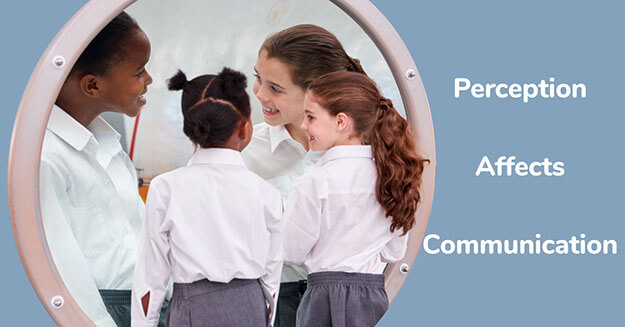
How would you respond to this? On the other hand, when we approach the other driver, we find that she is completely drunk. When we approach the other driver, we find that he had a heart attack, and that's why he hit us.

For example, let's say we are hit by a car. Whatever we attribute someone's behavior to, we proceed with them in accordance with the attribution.

These explanations are known as attributions. In answering the "why" question, we offer explanations for the behaviors we observe. Why did she behave like that at the party yesterday? We want to know. In addition to noticing others' behaviors, we want to figure out the causes of these behaviors. Interested in learning more? Why not take an online Interpersonal Communication course? The more we are aware of these types of errors, the more equipped we are to work around them in our communications. The characteristics in this section - stereotyping, primacy, recency, perceptual sets, egocentrism, positivity, and negativity are all powerful influences on communications. Satisfied couples tend to emphasize the positive attributes of their relationship, while dissatisfied couples tend to emphasize the negative. These types of biases are particularly influential in the communications of long-term relationships, such as marriage. In a negativity bias, even one piece of negative information can adversely affect your perception of that person. A negativity bias means the reverse: a tendency to focus heavily on another's negative attributes when forming a perception of that person. Positivity bias means a tendency to focus heavily on another's positive attributes when forming a perception of that person. In egocentrism, we assume that others should react to situations the way we would.īoth positivity and negativity biases affect our ability to accurately perceive the communications of others. While this is common in children, most of us outgrow this – but not all. As you might imagine, this interferes with our ability to accurately perceive others. The idea of egocentrism means the inability to take another's perspective. People tend to see what they are used to seeing. It then becomes difficult for us to imagine that this child could be a girl. An example of this is the preconception we form when we see a baby wrapped in blue. This limits our ability to accurately perceive what is actually there. Perceptual set is the idea that we perceive only what we want or expect to perceive. Both the first impressions and last impressions tend to be more important than any impressions people form in between. These matter, because this is how people tend to remember us. First impressions are important because they set the tone for future interactions. The problem with stereotypes comes when we treat individuals as extensions of the groups to which they belong, and assign the group's characteristics to the individual, without giving the individual a chance to truly be an individual, separate from the group's characteristics.įirst impressions are known as the primacy effect. Where we have to be careful with stereotypes is in overgeneralizing, because individuals don't always possess all of the characteristics of their perceived group memberships. Stereotypes are not inherently "bad" - rather, they are classification systems, and they can be very useful in encountering new input. Stereotypes are generalizations about groups that are applied to the individuals who are members of that group. This article will discuss several components of perceiving others. In this step, we assign meaning to the information we have received. The third component of interpersonal perception is interpretation. Instead, we create little boxes in our minds and put each stimulus in its appropriate box, when we receive it, to help with organization. The idea behind this is that we can't possibly classify each and every stimulus we receive individually and independently. These categories are known to psychologists as schema.

To help with this, our minds classify each stimulus into categories. Organization helps you make sense of what you notice. These are the things you notice about someone. This process involves three components: selection, organization, and interpretation. The idea of interpersonal perception means the process of making meaning from things we experience in people and our relationships. One of those is the dynamics involved in our perception of others. Many factors are involved in interpersonal communication.


 0 kommentar(er)
0 kommentar(er)
